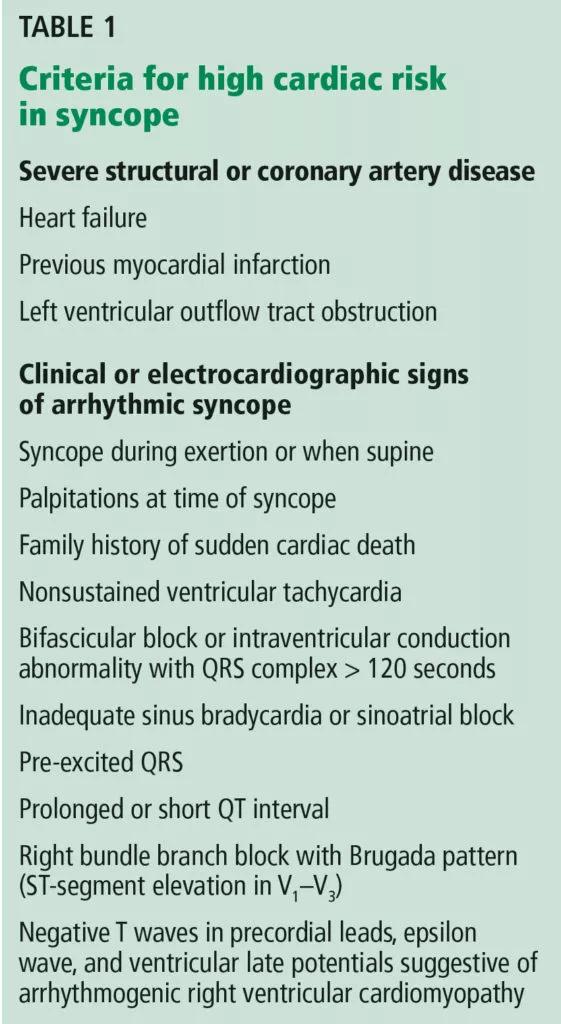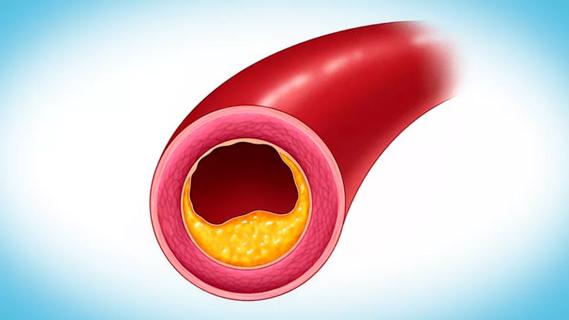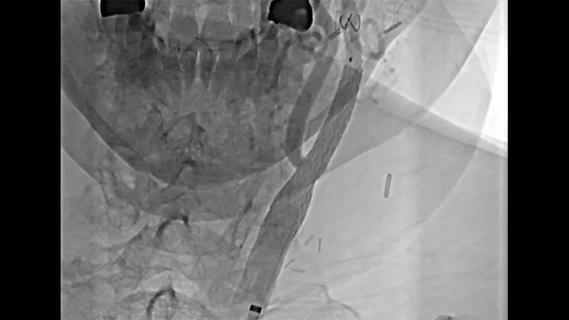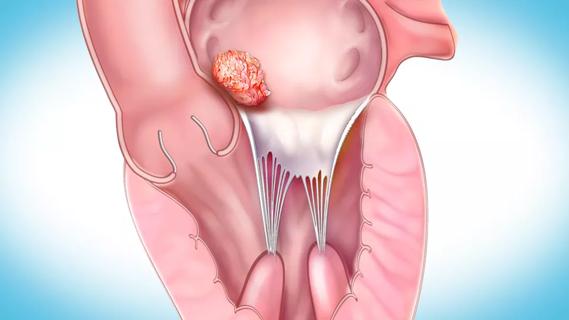A case lesson in how best to supplement the history and examination in this setting
By Erika Hutt-Centeno, MD; Robert Wilson, DO; and Kenneth A. Mayuga, MD
Cleveland Clinic is a non-profit academic medical center. Advertising on our site helps support our mission. We do not endorse non-Cleveland Clinic products or services. Policy
A 40-year-old woman with a history of hypertension, who was recently started on a diuretic, presents to the emergency department after a witnessed syncopal event. She reports a prodrome of lightheadedness, nausea and darkening of her vision that occurred a few seconds after standing, followed by loss of consciousness. She had a complete, spontaneous recovery after 10 seconds, but upon arousal she noticed she had lost bladder control.
Her blood pressure is 120/80 mmHg supine, 110/70 mmHg sitting and 90/60 mmHg standing. She has no focal neurologic deficits. The cardiac examination is normal, without murmurs, and electrocardiography shows sinus tachycardia (heart rate 110 bpm) without other abnormalities. Results of laboratory testing are unremarkable.
Should neuroimaging be ordered to evaluate her syncope?
Syncope is an abrupt loss of consciousness due to transient global cerebral hypoperfusion, with a concomitant loss of postural tone and rapid, spontaneous recovery.1 Recovery from syncope is characterized by immediate restoration of orientation and normal behavior, although the period after recovery may be accompanied by fatigue.2
The European Society of Cardiology has classified syncope2 into three main categories:
Determining the cause is critical, as this determines the prognosis.
According to the 2017 American College of Cardiology/American Heart Association (ACC/AHA) guidelines1 and the 2009 European Society of Cardiology guidelines,2 the evaluation of syncope should include a thorough history, taken from the patient and witnesses, and a complete physical examination. This can identify the cause of syncope in up to 50% of cases and differentiate between cardiac and noncardiac causes.
Features that point to cardiac syncope include age greater than 60 years, male sex, known heart disease, brief prodrome, syncope during exertion or when supine, first syncopal event, family history of sudden cardiac death and abnormal physical examination.1
Features that suggest noncardiac syncope are young age; syncope only when standing; recurrent syncope; a prodrome of nausea, vomiting and a warm sensation; and triggers such as dehydration, pain, distressful stimulus, cough, laugh micturition, defecation and swallowing.1
Electrocardiography should follow the history and physical examination. When done at presentation, ECG is diagnostic in only about 5% of cases. However, given the importance of the diagnosis, it remains an essential part of the initial evaluation of syncope.3
If a clear cause of syncope is identified at this point, no further workup is needed, and the cause of syncope should be addressed.1 If the cause is still unclear, the ACC/AHA guidelines recommend further evaluation based on the clinical presentation and risk stratification.
Routine use of additional testing is costly; tests should be ordered on the basis of their potential diagnostic and prognostic value. Additional evaluation should follow a stepwise approach and can include targeted blood work, autonomic nerve evaluation, tilt-table testing, transthoracic echocardiography, stress testing, electrocardiographic monitoring and electrophysiologic testing.1
If the initial evaluation indicates cardiac syncope (Table 1), evaluation with echocardiography has a class IIa recommendation (considered reasonable).1,2

Syncope is rarely a manifestation of neurologic disease, yet 11% to 58% of patients with a first episode of uncomplicated syncope undergo extensive neuroimaging with MRI, CT, EEG and carotid ultrasonography.4 Evidence suggests that routine neurologic testing is of limited value, given its low diagnostic yield and high cost.
Epilepsy is the most common neurologic cause of loss of consciousness but is estimated to account for syncope in less than 5% of patients.5 A thorough and thoughtful neurologic history and examination is often enough to distinguish between syncope, convulsive syncope, epileptic convulsions and pseudosyncope.
In syncope, the loss of consciousness usually occurs 30 seconds to several minutes after standing. It presents with or without a prodrome (warmth, palpitations and diaphoresis) and can be relieved with supine positioning. True loss of consciousness usually lasts less than a minute and is accompanied by loss of postural tone, with little or no fatigue in the recovery period.6
Conversely, in convulsive syncope, the prodrome can include pallor and diaphoresis. Loss of consciousness lasts about 30 seconds but is accompanied by fixed gaze, upward eye deviation, nuchal rigidity, tonic spasms, myoclonic jerks, tonic-clonic convulsions and oral automatisms.6
Pseudosyncope is characterized by a prodrome of lightheadedness, shortness of breath, chest pain and tingling sensations, followed by episodes of apparent loss of consciousness that last longer than several minutes and occur multiple times a day. During these episodes, patients purposefully try to avoid trauma when they lose consciousness, and almost always keep their eyes closed, in contrast to syncopal episodes, when the eyes are open and glassy.7
If the diagnosis remains unclear after the history and neurologic examination, EEG is recommended (class IIa, i.e., reasonable, can be useful) during tilt-table testing, as it can help differentiate syncope, pseudosyncope and epilepsy.1
In an epileptic convulsion, EEG shows epileptiform discharges, whereas in syncope, it shows diffuse brainwave slowing with delta waves and a flatline pattern. In pseudosyncope and psychogenic nonepileptic seizures, EEG shows normal activity.8
Routine EEG is not recommended if there are no specific neurologic signs of epilepsy or if the history and neurologic examination indicate syncope or pseudosyncope.1
Structural brain disease does not typically present with transient global cerebral hypoperfusion resulting in syncope, so MRI and CT have a low diagnostic yield. Studies have revealed that for the 11% to 58% of patients who undergo neuroimaging, it establishes a diagnosis in only 0.2% to 1%.9 For this reason and in view of their high cost, these imaging tests should not be routinely ordered in the evaluation of syncope.4,10 Similarly, carotid artery imaging should not be routinely ordered if there is no focal neurologic finding suggesting unilateral ischemia.10
In our 40-year-old patient, the history suggests dehydration, as she recently started taking a diuretic. Thus, laboratory testing is reasonable.
Loss of bladder control is often interpreted as a red flag for neurologic disease, but syncope can often present with urinary incontinence. Urinary incontinence may also occur in epileptic seizures and in nonepileptic events such as syncope. A pooled analysis by Brigo and colleagues11 determined that urinary incontinence had no value in distinguishing between epilepsy and syncope. Therefore, this physical finding should not incline the clinician to one diagnosis or the other.
Given our patient’s presentation, findings on physical examination and absence of focal neurologic deficits, she should not undergo neuroimaging for syncope evaluation. The more likely cause of her syncope is orthostatic intolerance (orthostatic hypotension or vasovagal syncope) in the setting of intravascular volume depletion, likely secondary to diuretic use. Obtaining orthostatic vital signs is mandatory, and this confirms the diagnosis.
This article is reprinted from the April 2019 issue of Cleveland Clinic Journal of Medicine(2019;86:240-242).
Dr. Hutt-Centeno is a physician in Cleveland Clinic’s Department of Internal Medicine. Dr. Wilson is a neurologist in Cleveland Clinic’s Neuromuscular Center. Dr. Mayuga is Associate Director of the Syncope Center in the Section of Cardiac Electrophysiology and Pacing in Cleveland Clinic’s Department of Cardiovascular Medicine.

Technique may lay groundwork for personalized decision-making in procedural intervention

Cleveland Clinic series supports re-repair as a favored option regardless of failure timing

Cleveland Clinic study points to need for new strategies to curb addiction relapse

Tech-assisted self-selection concurred with clinician-assessed eligibility in >90% of cases

Support for a TAVR-first approach in patients with concurrent valve and coronary disease

Logistic feasibility supported for treating obstructive HCM under the REMS program

Insights from the Cleveland Clinic experience and a multispecialty alliance

Recurrences were rare and survival robust in large Cleveland Clinic study